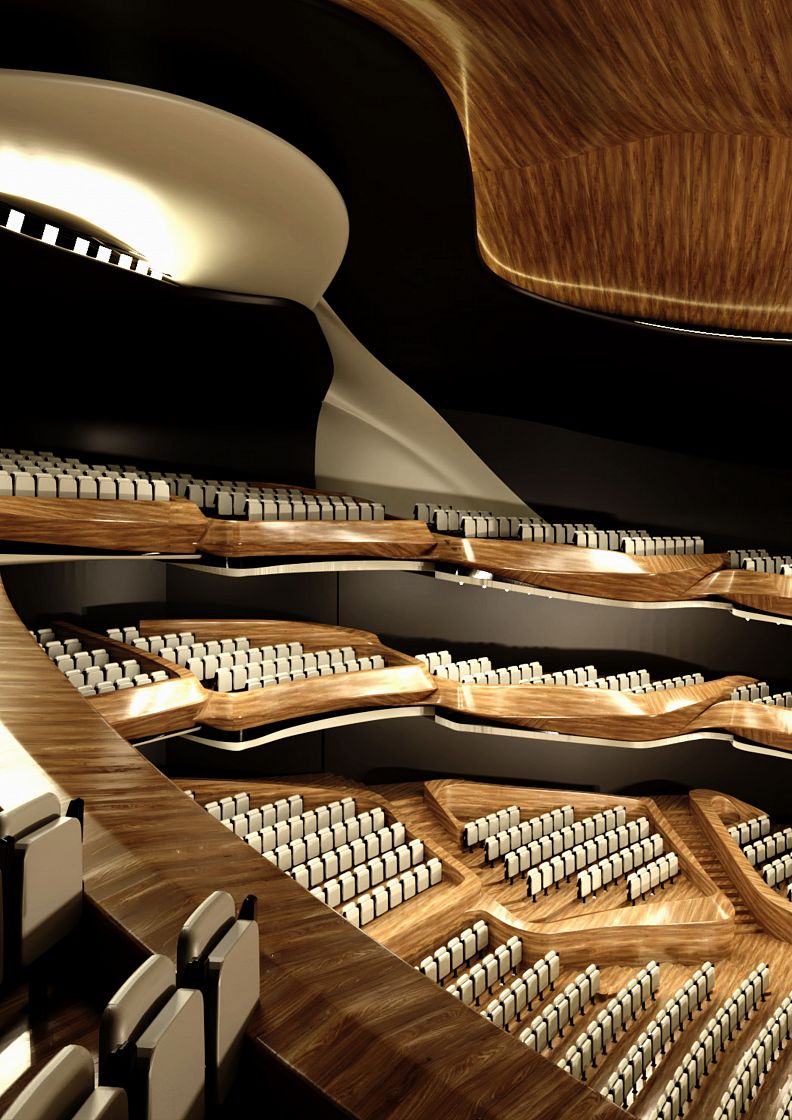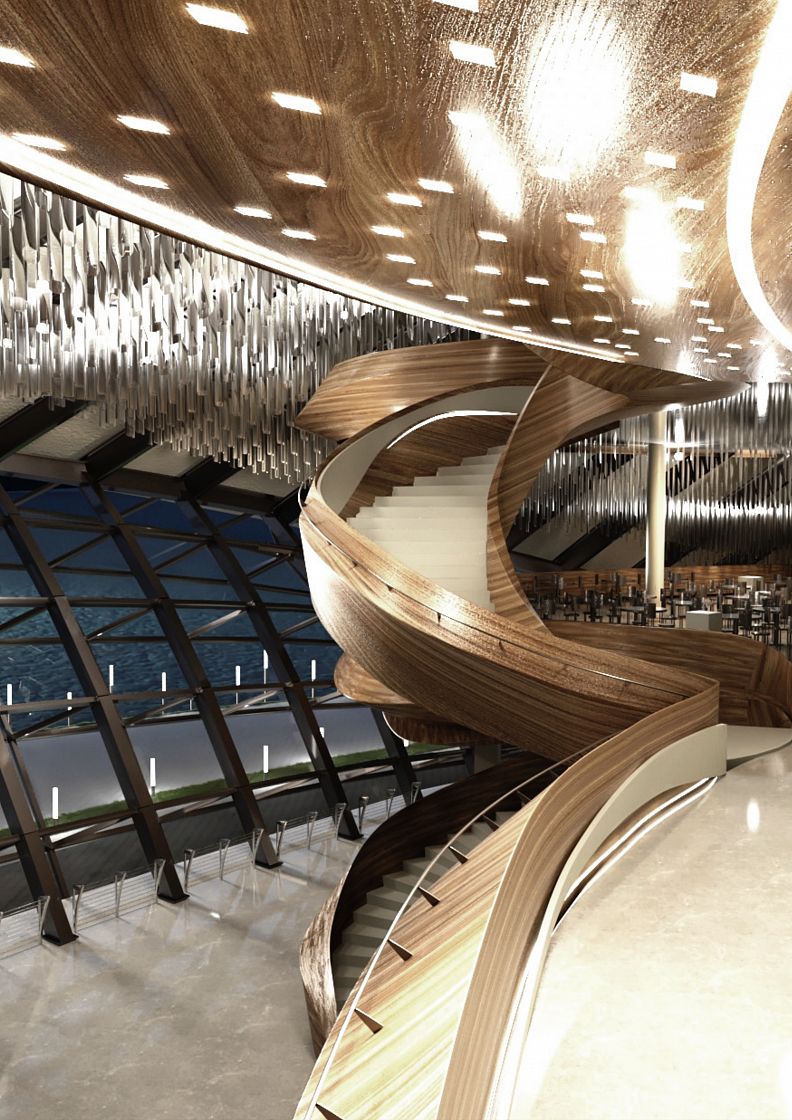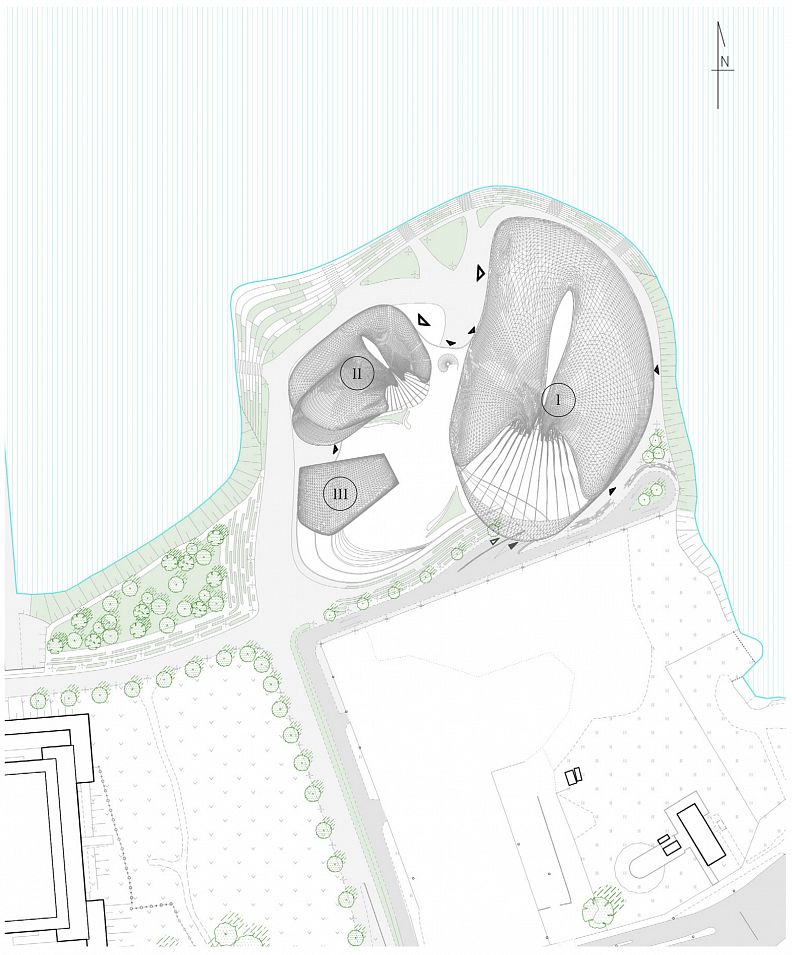Opera by the Sea, Tallinn, Estonia

Project idea
Opera house as an Icon of the city. The relation between the horizontal layout of the quay and the city's architecture was obtained through the uplift of the Opera house and its curved form. The division into 3 shapes and connecting them with a common groundfloor resulted in an interesting form in the city landscape, refer to maritime architecture and crystallized the function.
Project description
The project Opera by the sea is located on the seashore in Tallinn, the capital of Estonia. The project aimed to revitalize and organize the space between the city harbour and the abandoned Linnahall. It was also necessary to create an axis between the city and the designed architecture. The design challenge was to introduce a vertical element so as not to disturb the horizontal nature of the waterfront.
While designing the building's form, a functional program was developed. The basic stage of work was assigning functions to individual blocks. The largest building includes the main hall with an auditorium, a stage, side pockets, auxiliary rooms and facilities for artists. The smaller of the blocks contains a small hall for 400 people and accompanying rooms. The third one has rehearsal rooms for ballet, orchestra and separate rooms for individual exercises. The whole is connected by a common ground floor. It contains main communication between the blocks and technical spaces. An entrance to the underground parking were located on the side of the building.
The plot development concept was based on the city-sea relationship. Individual building blocks fulfil the following main functions:
Building I - main hall with a representative lobby and facilities for artists;
Building II - an intimate room with an entrance lobby and small facilities for artists;
Building III - rehearsal rooms for ballet and an orchestra, rooms for individual exercises.
The main entrances to the building are located on the sea side. Two roads lead to it: the first, designed as a representative boulevard along the coast. The second one, to the space above the ground floor between the buildings, maintains the compositional axis of opening to the sea. Along the boulevard there is a descent to the sea in the form of steps with greenery. A connection was maintained with the Linnahall building and towards the city by creating an avenue of trees. At the front, representative stairs leading to the space between the buildings above the ground floor are located. It is designed as a place for outdoor events and a recreation area. In this zone, the eyes are directed towards the space between the buildings, as an opening towards the sea. An external spiral staircase leads to the main entrance located on the lower level. The main access road is directed from the side of the building.
The main hall has 1949 places, including 4 for disabled people. Its design was guided by the concept of a flowing form that connects with the exterior of the building. The ceiling is made of curved surfaces illuminated from the inside. The balconies are designed as irregular, flowing forms finished with wood-like cladding. The auditorium was divided into 4 main levels: lower and upper auditorium, 1st and 2nd balcony.
The balconies have been designed to allow sound to penetrate into the niches under the balcony. Suspended ceiling surfaces fulfil a similar function. The space provided above the space of the hall allows for adjustments and its tuning.
Technical information
Project name: Opera by the Sea
Location: Tallinn, Estonia
Function: Public cultural building
Main audience seats: 1949
Height: 75m
Floors: 13
Measures - main building: 157,80 x 96,10m
Building area: about 19 800m2











